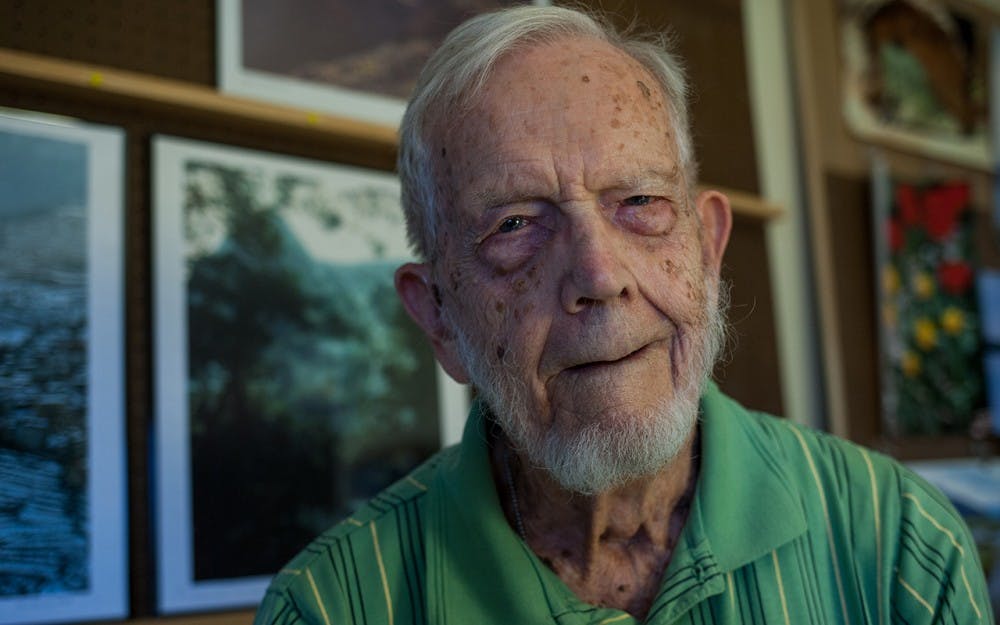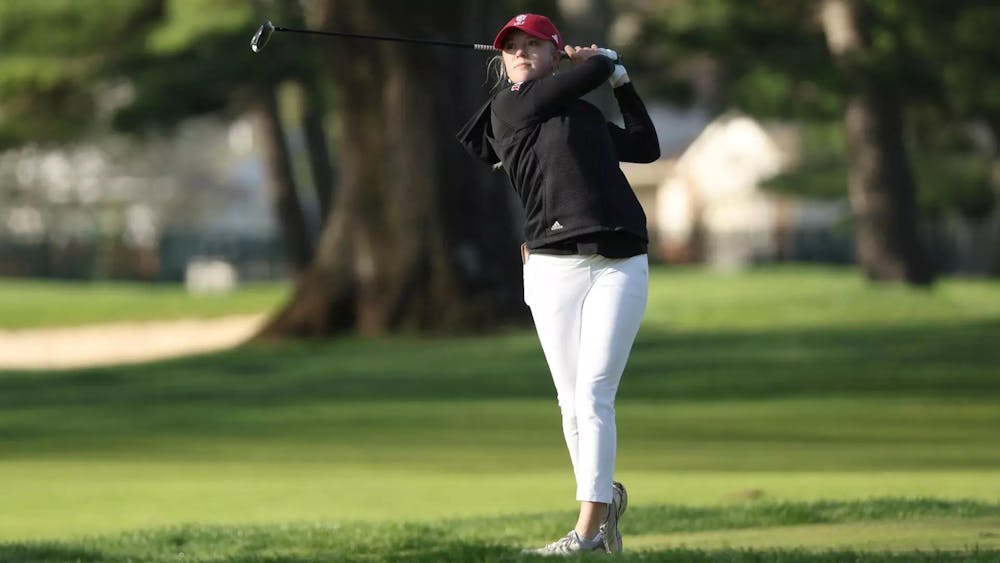In his small Bloomington apartment in a retirement community in Bloomington, photographer and former IU professor Malcolm Fleming, 97, has several photos from his portfolio hanging on the walls and hidden inside bins.
“You can certainly get an idea where exactly I have been from these photos,” Fleming said.
In 1945, at the tail end of World War II, Fleming found himself in Germany, photographing the daily lives of American soldiers with a small Kodak camera he kept around his belt.
During his time in the war, Fleming said he took more than 400 photographs. Many of these were taken for the Army, but some were for his own interest. It is the latter photos, he said, that comprise his new photography book, “From War to Peace in 1945 Germany.”
Published in April by IU Press, the book is made up of not only these photos but also captions Fleming said he wrote himself.
Fleming said he first approached IU Press with the idea for the book about 20 years ago, after teaching at IU for about 15 years, but it was rejected because of an apparent lack of interest in the material.
“They said, ‘If you brought those in five years ago, maybe we would have had something,’” Fleming said. “The book world was uninterested in Germany.”
However, a few years ago, Fleming said he proposed the idea once more to IU Press and it was accepted.
“A lot more people seem interested in World War II now,” Fleming said. “So I guess it seemed appropriate to do the book now.”
In a press release from IU Newsroom in April, IU professor James Madison, who wrote the forward to Fleming’s book, said he was impressed with Fleming’s war photos.
“They seemed so real,” Madison said. “They’re not posed. They’re not fake.”
Growing up in Oregon, Fleming said he had his very own box camera, and even then, he had a significant interest in photography. Eventually, he began taking a bus every evening to Portland, where he would receive lessons from the Eastman Kodak Company.
Through these lessons, Fleming not only learned how to take photos, but also develop them in a darkroom, he said. Following these lessons, he created his own darkroom inside the attic of his home.
Fleming said his passion for photography only grew throughout his high school and college years.
“In high school, I had fun taking snapshots of my friends and the faculty,” Fleming said. “Some of the faculty didn’t appreciate my photography.”
After receiving a bachelor’s degree in fishing life and management at Oregon State University, as well as spending a short time in graduate school at the University of Washington, Fleming said he began looking into joining the Allied forces for World War II.
“I was halfway into my first semester when I heard that the local draft board was getting close to my number,” Fleming said. “So I decided to enlist.”
For his first year in the Army, Fleming said he worked in a warehouse in Seattle, listening in on Russian radio communications.
However, he said the United States government decided they wanted to send in more able-bodied soldiers overseas where the war was being fought, so Fleming was given the option to transfer to Germany.
“Otherwise, they were going to do it anyway and make good soldiers out of us,” Fleming said.
Once given this opportunity, Fleming said he applied to become an Army photographer, and he was approved. In order to prepare for this position, he spent a year in training with other Army photographers in Long Island, New York.
In March 1945, Fleming said he finally reached Germany, where he began his job by spending several weeks following American soldiers from town to town, documenting their lifestyles through his camera.
After this, Fleming said he and the other photographers briefly left Germany and spent some time in Paris, where the Army critiqued the photographers’ work.
When the war was finally over, Fleming said he spent a few months in Allied-occupied Germany to continue taking more photos, not only of the soldiers and people, but also of the cities and architecture destroyed during the war.
Once his job in the war was finished, he wanted to continue to pursue his interest in photography by incorporating it into a full-time career, he said. After working for Kodak for about three years, he took on a career as a supervisor of educational motion picture in 1954. He became a teacher at IU in 1960 and continued until 1975.
Despite his achievements in documenting historical events through pictures, Fleming said he is hesitant to call himself a historian. He said he believes he performed poorly in the subject in school.
“Regardless, there was still some sense that we were all documenting history, and I think that’s reflected in the book,” Fleming said.






